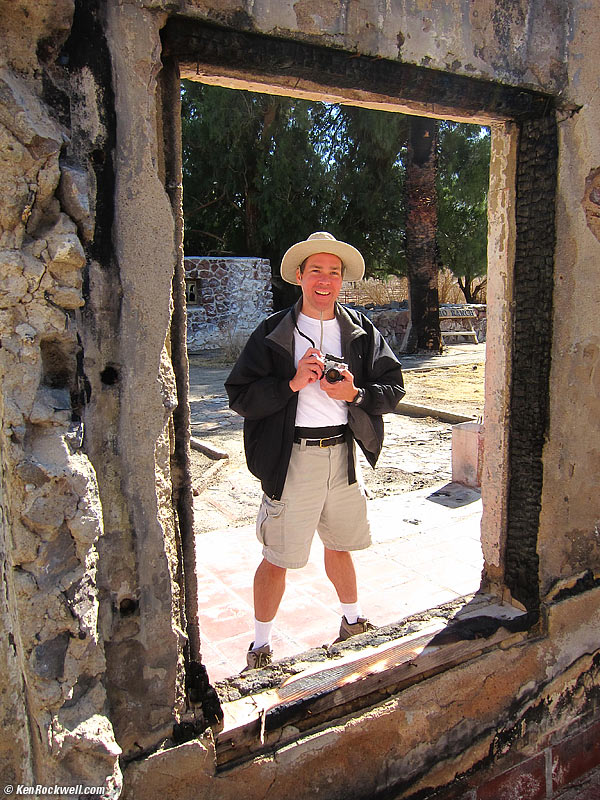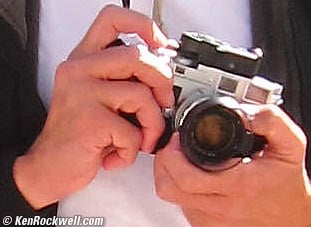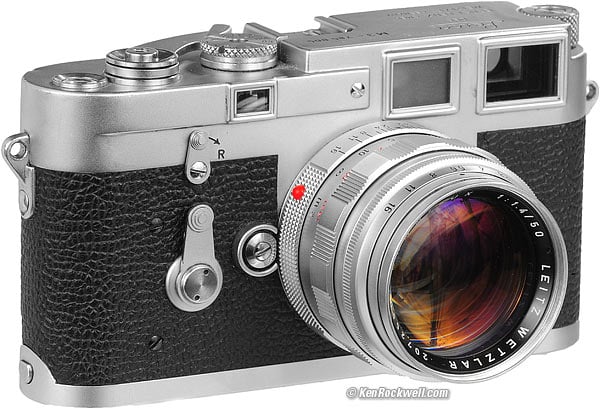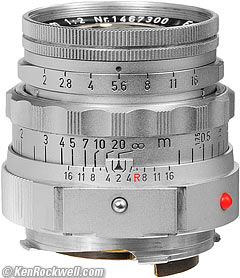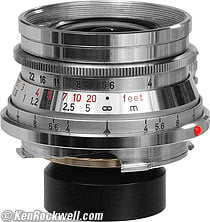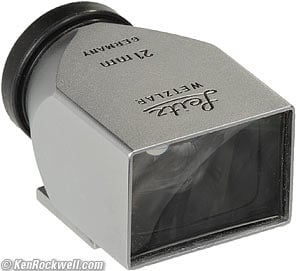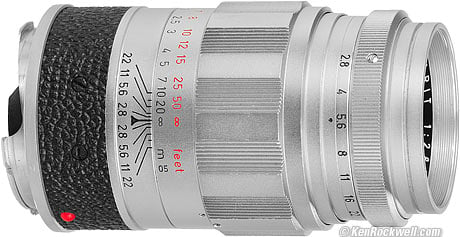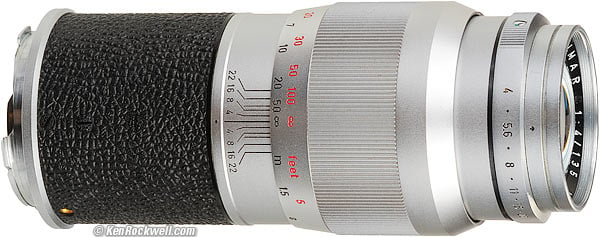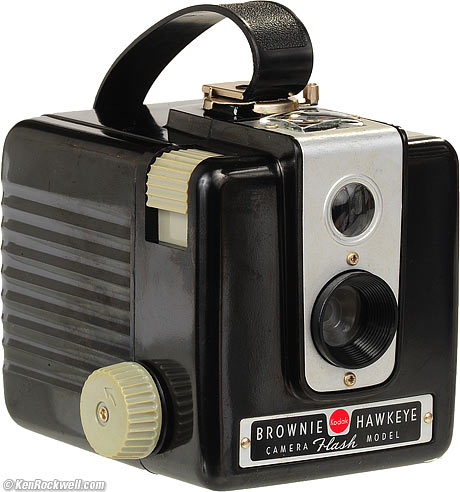Home Donate New Search Gallery How-To Books Links Workshops About Contact
ROUTE 66: TECH STORY
(this page best viewed on Mac with Future font activated)
12 13 14 15 16 17 February 2010 contact sheet tech data
ROCKWELL IN THE WINDOW. enlargement.
I had so much fun on this trip.
My camera vanished from my hands and from my consciousness. I saw images, and they were captured. I concentrated on seeing and having a good time, and I did. The actual photography was effortless: the cameras responded instantly to my needs. My cameras served me transparently, and never talked back or played sixty-questions with me before they fired. The cameras simply vanished.
I left all the digital BS at home and did Route 66 right: I only shot cameras from the late 1950s.
Route 66, like photography and America, was in its heyday in the late 1950s. By the late 1960s, the freeways came in and Route 66 has been dying ever since.
Therefore I shot with a 1950s rangefinder camera, 1950s lenses, 1950s light meters, and a 1950s Kodak Brownie Hawkeye (flash model) for snapshots.
This means:
No batteries.
No transistors.
No chargers.
No computers.
No cords.
No LCDs.
No menus.
No GPS.
No cell phones.
No back-up drives.
No firmware.
No LEDs.
No software.
No DVD drives.
No exposure modes.
No pixels.
No electronic autofocus.
No cameras not taking pictures because something's not set.
No waiting for cards to write.
No waiting for cards to download.
No dead batteries.
No full CF cards.
No turn-on delays.
No shutter delays.
No waiting.
No BS.
No problem!
We had nothing except good food, good fun, good friends, and most importantly, great photos without all the hassle of the electronics to which too many people allow themselves to become enslaved today.
I had the time of my life, and I think I got more printable pictures than ever before.
Why? Getting rid of all the crap means nothing between me and a great picture.
Time not wasted nursing some pathetic DSLR's menu system or custom function buttons means I'm shooting all day and night, instead of playing video games on what was supposed to be my camera.
I'm serious: someone brought a Canon 40D, and it took three of us to figure out how to set exposure compensation so a picture could be taken. It turned out a CFN had been set someplace that reset the rear dial to select AF zones instead of exposure compensation. Why does anyone even need more than one focus zone? Since when can SLR lenses focus at two different distances at once? Sweet Lord Jesus, please deliver us from this evil so we can take pictures again.
What am I holding? Let's "zoom in:"
Golly! It's a 1950s LEICA M3, a clip-on light meter, a 1950s 50mm lens and a hood! Holy cow!
Most of the people on our trip had also cast away the cares of the 2000s. If we're not all getting the benefits of living a decade after the year 2000, like driving around in space cars on Mars with robots to do our chores, why should we bother with all the new-age crap like shutter delay, obtuse menu systems, or electronic cameras that expect us to be robots to serve them?
We had one guy drive a Studebaker, and he was shooting everything from an Speed Graphic to a chrome Hasselblad, while others shot Contax 645, Mamiya 645 AF, Contax 35mm, Nikon FE, and I forget what else. Someone gave me a high-tech Minolta MAXXUM 7000 which I also shot for fun when no one was looking.
I chose LEICA because I could. While only those who also owned their own helicopters and platinum mines could afford LEICA in the 1950s, today, the camera I borrowed sells for less than a Nikon D90.
All the gear I used was designed in the 1950s. Some of the specific samples I used were manufactured a few years later, but they all were introduced in the 1950s. The years mentioned are the actual manufacturing dates for each sample.
I enjoyed using this classic gear so much that I can't put it into words. There is no BS, just the settings you need and nothing else. The LEICA is so well built that it's a treat just to touch it, much less adjust its delicious controls and to fire it.
Loading film into an M3 and winding to the first frame is like chambering a live round into an empty weapon, lighting up a big V8, or when God breathes life into a new baby. What was inanimate is now alive! It's ready to shoot! It's ALIVE!
Setting exposures with the semiautomatic system of the M3 and LEICAMETER is trivially easy, much faster and easier than screwing with metering patterns and compensation on modern cameras.
The quiet, simple precision of shooting the LEICA is something I can't describe. If all I got was the same results as I get from digital cameras, this sublime pleasure of shooting would be worth it, but the results I get from film are superior to what I get with digital capture, both artistically and technically.
The mechanical M3 is so much fun shooting. It's silent as you wind and fire each shot. It takes just a second to set exposure, focus, aim, shoot, and wind for the next great shot. Unlike digital, all my shots come back perfectly exposed and in focus; I never have to make a second shot after seeing how bad one is on the LCD. That's why the M3 has no LCD: every shot is perfect, so why would you need an LCD?
I flew through ten rolls in several days and had more fun than ever doing it. It feels so good!
The scans I show online don't do the original film justice. Unlike digital capture, I can drop these slides into my projector, and within seconds I've got a slide show happening with 25 megapixel resolution, and perfect color far ahead of what comes out of digital projectors, even after much cursing.
No space car? Then why shoulder the burden of digital?
Shooting this classic, timeless equipment proved to me that most of what we've been dealt in the past 50 years is just marketing BS. This older, higher-quality equipment takes better pictures, takes them more quickly and more easily, and costs less. Sorry to be so honest, but I'm not on any camera company's payroll. I say what I feel, and this old gear feels so much better than the digital plastic that too many people confuse with cameras today.
Forgive my gloating, but this classic LEICA equipment costs a lot LESS than today's made-in-who-knows-where rabble from Nikon and Canon. I'm gloating because I'm such a cheapskate.
Leica advertised the LEICA M3 in 1954 as "incomparable," like having an "848-jewel movement" and "astonishing." Camera makers don't use words like this today because no one, not even LEICA, makes cameras like this today.
When Leica advertised LEICA M3 as a "lifetime investment in perfect photography," they had no idea how right they would be. Most of the gear I borrowed came from owners who are no longer alive. This gear outlasts its owners. It's good for more than a single lifetime; it's good for several lifetimes, and it's still cranking out perfect pictures today.
I'm amazed. Not only are the photos super-sharp, even the primitive selenium meters were right-on for shooting slides. No wonder Leica advertised in 1957 that "99 out of 100 color photographs" seen in National Geographic were shot on LEICAs.
Queen Elizabeth of England's 60th birthday commemorative postage stamp (17p and 34p, issued in 1986 in the UK) shows her with her own M3, which she's been using since 1958. She's shown in the image of her her 50th birthday, or in 1976, enjoying her nearly 20-year old (at the time) M3.
Good enough for National Geographic, good enough for royalty and good enough for Miles Davis? Good enough for me to borrow for Route 66, and remember, even if I bought this stuff, immortality still costs less than a D90!
I certainly didn't bother with LEICA's M9. The M3 is a better camera, feels better to shoot, and takes better pictures. The LEICA M9 is the world's best digital camera, but it's still just a shadow of a real LEICA.
I used this setup for 35mm:
1963 LEICA M3 (introduced in 1954)
LEICA M3 with 50mm f/1.4 SUMMILUX.
You can buy a LEICA M3, the best camera Leica has ever made, for less than a Nikon D90. It weighs less than a plastic D90, too!
The Nikon D700 costs three times as much and weighs twice as much, and the M3 still confidently outperforms it. The LEICA M3 is much smaller than you think.
The LEICA M3 is entirely mechanical. The thumb-wind lever advances film and cocks the shutter.
I used either a 1950s LEICAMETER MC clip-on selenium light meter, or a 1980 LEICAMETER MR-4 CdS clip-on light meter, introduced in 1965. Either one slides into the accessory shoe and couples to the shutter dial. The photo above shows no meter attached.
The 1950s selenium-cell (solar-powered) LEICAMETER MC light meter works great, but reads a relatively wide angle. When I needed narrower readings, I reverted to a 1980 CdS LEICAMETER MR-4, with a mercury battery of course. No electronics here! Likewise, only the LEICAMETER MR-4 read down to the three second at f/2 exposures I needed in the dark, and it still does it without electronics.
Both of these meters give semi-automatic shutter-preferred operation. Simply choose a shutter speed, and the meter directly indicates the correct aperture to set on the lens. The meter is coupled to the camera's shutter speed dial, so presuming you set the ASA as you loaded your film, it's all automatic, needing simply to set the aperture as shown. This is a lot easier then juggling menus with digital!
The LEICAMETER MR-4 is so advanced that it locks the reading when you release the button, making it easy to take a reading from any position, and then look at it at your convenience. The selenium LEICAMETER MC has no lock.
I didn't bring the ultra-speed SUMMILUX lens shown above. Instead, I brought the slower and even higher-performance:
1957 50mm f/2 LEICA SUMMICRON mit near-focusing range (introduced in 1956)
LEICA SUMMICRON 50mm f/2 mit near-focusing range.
This is Leica's greatest 50mm lens of all time. Leica hailed it, along with the 35mm lens below, as the most remarkable optic yet crafted by man. It sells for the same price today as many more people cheerfully pay for Nikon's inferior made-in-China plastic 50mm lens.
On film, the SUMMICRON's optics are outstanding, exceeded only slightly by the newest LEICA SUMMICRON-M 50mm f/2, but more importantly, this SUMMICRON is the only Leica 50mm lens which can focus to 0.48 meters. It has a second macro range, and all you need to do to activate it is to attach the compact auxiliary viewfinder device, which conveniently stows in your vest pocket.
No other Leica 50mm lens has this ability. Older lenses aren't as good optically, and newer lenses have flimsy aluminum mounts, in stark contrast to the eternal solid brass from which this SUMMICRON's mount is hewn.
I used a 12 585 lens hood.
I never removed the hood, except to change filters. I stored it with an ordinary 55mm snap-in cap over the front of the hood. I popped on the snap-in cap, and dropped the whole thing in my bag with no need to fiddle with hoods.
Other lenses used are the:
1959 21mm f/4 LEITZ SUPER-ANGULON (introduced in 1958)
This is the smallest and lightest 21mm lens ever sold by Leica.
It also has no distortion, and it takes standard 39mm screw-in filters.
I used a SKBOO 21mm finder. I slid off the meter and popped this into the accessory shoe. That's two things to change, but still less bother than formatting a memory card.
Why would anyone pay more for a newer 21mm lens? Nikon's closest imitation, the 16-35mm f/4 VR, sells for more money, weighs three times as much and takes up about ten times the space in a camera bag.
I didn't bother with a hood. A filter does about the same thing.
I kept it capped with a chromed-brass felt-lined A42 cap.
1965 35mm f/2 LEICA SUMMICRON (introduced in 1958)
1965 35mm f/2 LEICA SUMMICRON.
This is Leica's first high-speed wide-angle lens. It has eight elements. It weighs less than the newest LEICA SUMMICRON 35mm f/2 ASPH, even with the extra eyepieces, and has less distortion, too.
I used this version designed for the M3, which includes auxiliary viewfinder optics to change the magnification of the M3's spectacular finder to match the angle-of-view of the 35mm lens.
In Nikon, most people would be shooting the 24-70mm f/2.8 AF-S in its place. Not only does the Nikon lens cost twice as much as this optically and mechanically superior LEICA lens, the Nikon 24-70mm weighs four times as much and is a stop slower. So why should I care about Nikon? Do I really want all my money flowing to Japan for inferior products?
I used a more recent 12 585 lens hood, which I kept capped with an ordinary 55mm snap-in cap. I never removed the hood, except to change filters. I popped on the snap-in cap, and dropped the whole thing in my bag.
1964 90mm f/2.8 LEICA ELMARIT (introduced in 1959)
1964 90mm f/2.8 LEICA ELMARIT.
This chrome beauty takes tiny 39mm filters, as do all of these lenses.
I used the 12 575 hood, which I reversed and covered with the dedicated LEICA 14 033 cap when stowed.
Most people would shoot a 70-200mm f/2.8 zoom in its place. These zooms have far more distortion, can't focus as close, weigh four to five times as much, cost four to five times as much, and won't even fit in my bag. Who buys these things?
1961 135mm f/4 LEICA ELMAR (introduced in 1960)
This lens was only made from 1960-1965. It is the lightest LEICA 135mm lens ever made.
It is astoundingly sharp, as I discovered shooting it on the LEICA M9 in Yosemite.
It also takes 39mm filters, as do all these lenses, and rarely sells for more than $99 today. I have no idea why anyone would want any other 135mm lens, much less pay more for it.
Nikon has nothing similar. Canon's most popular imitation is the excellent 70-200mm f/4 L, which still weighs twice as much, costs ten times as much, won't fit in my bag, and still has distortion and isn't as sharp as this fifty-year old LEICA lens.
I kept this capped with a chromed-brass A42 slip-on cap. I used the hood from the 90mm lens if I needed it; it's the same hood.
FILTERS
All five lenses take 39mm filters.
This is the huge advantage of these classic lenses. Leica's newer lenses have gotten so fat that many of them need bigger filters. If I struggled with current Leica lenses, I'd have needed a set of 55mm filters for the 21mm lens, a set of 46mm filters for the 90mm f/2.8, a set of 49mm filters for the 135mm, as well as my original set of tiny 39mm filters the for 35mm and 50mm. Today, it makes no sense to have to carry all these duplicate filters. These classic lenses work together as a system, while today's lenses are unprofessional with their random filter sizes.
I kept an 81A on each for color.
Black-and-white film demands at least a yellow filter in daylight. Otherwise, black-and-white film is much, much more sensitive to blue light than our eyes are, so without a filter, skies wash out to white on black-and-white film.
A yellow filter renders the sky as it looks to our eyes on black-and-white.
An orange filter darkens the sky more, but absorbs another stop of light.
I used no filters in the dark, when I was trying to collect every photon I could without resorting to the crutch of a tripod.
REAR CAPS
The 21mm takes a deep rear cap.
I borrowed five aftermarket extra-deep rear caps, and used them on all lenses.
Why? Because if I used only one deep rear cap, I'd have to change twice as many rear caps every time I swapped lenses.
By using the same special deep cap for all lenses, I never had to worry about matching rear caps to lenses.
BAG
I used my 1990s Tamrac 905 half-moon waist bag. No one makes anything like it today. It holds the camera and five lenses, all in a little bag, and all right at your fingertips at any time.
SNAPSHOTS
The Kodak Brownie Hawkeye, Flash Model.
I explain everything about the Kodak Brownie on it's own contact sheet.
LAB
I dropped everything at NCPS, who developed and scanned everything.
When I popped back, my film is all done and all my scans are on DVDs.
I pop the DVDs in my computer to share here, and they're now backed-up three ways with no more work:
1.) Original film.
2.) Burnt to DVD.
3.) On my Mac's hard drive, which itself is backed up.
FLOOBYDUST
Other claptrap I shot included a Canon S90 (a "digital" camera) and a stunningly wonderful New Mamiya 6.
I rarely shot the "digital" camera. I used to shoot everything a second time on digital just to have it, but I discovered that only shooting one camera at a time, usually the LEICA, focused my vision and resulted in seeing and taking better pictures.
MAINTENANCE and REPAIRS
Many, many thanks to Gus Lazzari and OC Camera for all their help in resurrecting much of this old gear so that I could shoot it.
The Kodak came in all hazy, and they cleaned it up like new.
The M3 had a broken shutter. They repaired it, without touching the original "L" seal.
The 90mm lens was crocked. They resurrected it, and it, like everything here, now works perfectly, and probably will work perfectly until long after I'm dead.
COLOPHON
I'd print this using letterpress, but that doesn't work over the Internet.
I was going to use Future for headings and Carson for text, but I realized that only about three of you readers have Carson installed.
I considered setting all the type as GIF's, but realized that I'd go crazy as I tried to edit them into pages.
I settled on setting all the type in Future simply by adding "Future" before "Helvetica" in the the "font-family: Future, Helvetica, Aral, sans-serif" CSS BS at the top of my pages.
12 13 14 15 16 17 February 2010 contact sheet tech data
Home Donate New Search Gallery How-To Books Links Workshops About Contact
